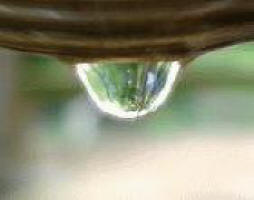 Jordan: Sahara Forest in Aqaba to turn sun and seawater into food and drinking water?
Jordan: Sahara Forest in Aqaba to turn sun and seawater into food and drinking water?
A green machine that promises to turn sun and seawater into food, fuel and drinking water will be tried out in the desert near the Red Sea in Jordan, project partners announced.
The Sahara Forest Project has the potential to turn deserts into green oases that soak up carbon dioxide from the atmosphere and thus curb global climate change. It’s the sort of thing environmentalists who aren't afraid of geoengineering might describe as dreamy.
How it works
The machine integrates a 10-megawatt solar power plant with a high-tech greenhouse and desalination system to turn readily available sun and seawater into life essentials that are increasingly difficult to acquire affordably in the Middle East.
Here's how it works: Saltwater pumped from the Red Sea is evaporated from grilles at the front of the greenhouse to create cool and humid conditions, which are good for growing food and algae. The algae can be used to produce more food or fuel.
As the cool and humid air leaves the growing area, it passes over a second evaporator containing seawater heated by the sun, which warms the air so it can hold even more water. This hot and humid air then meets a series of vertical pipes that have been cooled by seawater, which causes the freshwater vapors to condense and trickle as freshwater droplets down the tubes for collection.
This freshwater is then heated by a concentrated solar power plant, which creates steam to turn turbines that generate electricity. The electricity powers the pumps and fans used to bring saltwater in from the Red Sea and grow crops and algae in the greenhouse. Leftover freshwater will be used to re-green the area around the greenhouse, creating that carbon-soaking vegetative sponge.
Funding and rollout
Project partners signed a deal to build a demonstration machine on a 50-acre site in Aqaba with funding from the Norwegian government. The designers estimate the construction cost to be $110 million (80 million euros). In addition, the project has rights for expansion onto 500 acres.
In-depth feasibility studies will be conducted throughout 2011. Construction of the pilot plant is slated for 2012, with commercial-scale development eyed for 2015.
Partners in the Sahara Forest Project include London-based Max Fordham Consulting Engineers, Seawater Greenhouse, Exploration Architecture and the Oslo, Norway-based Bellona Foundation.
“The Sahara Forest Project is a fiercely ambitious effort from Bellona, but ambitious is exactly what we must be,” Bellona Foundation President Frederic Hauge said in a statement. “A critical prerequisite for solving both the climate crisis and the world’s food problem is to enable developing countries to produce their own food, their own water, and their own clean energy, instead of importing oil from us.”
| Contact information |
Email: batirw@yahoo.com ; sfp@bellona.org |
|---|---|
| News type | Inbrief |
| File link |
http://cosmiclog.msnbc.msn.com/_news/2011/01/21/5892625-green-machine-takes-root-in-jordan |
| Source of information | Batir M. Wardam, Sustainable Jordan blog |
| Subject(s) | ANALYSIS AND TESTS , CHARACTERISTICAL PARAMETERS OF WATERS AND SLUDGES , DRINKING WATER , DRINKING WATER AND SANITATION : COMMON PROCESSES OF PURIFICATION AND TREATMENT , ENERGY , HYDRAULICS - HYDROLOGY , INDUSTRY , INFRASTRUCTURES , MEASUREMENTS AND INSTRUMENTATION , SANITATION -STRICT PURIFICATION PROCESSES |
| Relation | http://www.saharaforestproject.com |
| Geographical coverage | Jordan, |
| News date | 24/01/2011 |
| Working language(s) | ENGLISH |
 you are not logged in
you are not logged in





